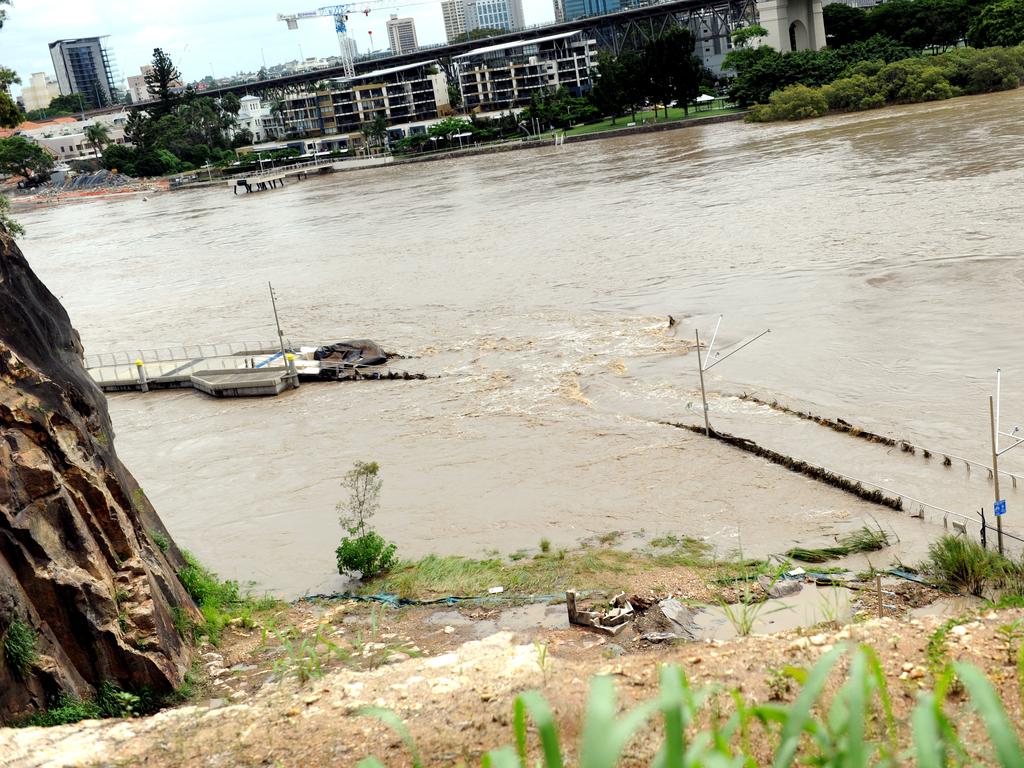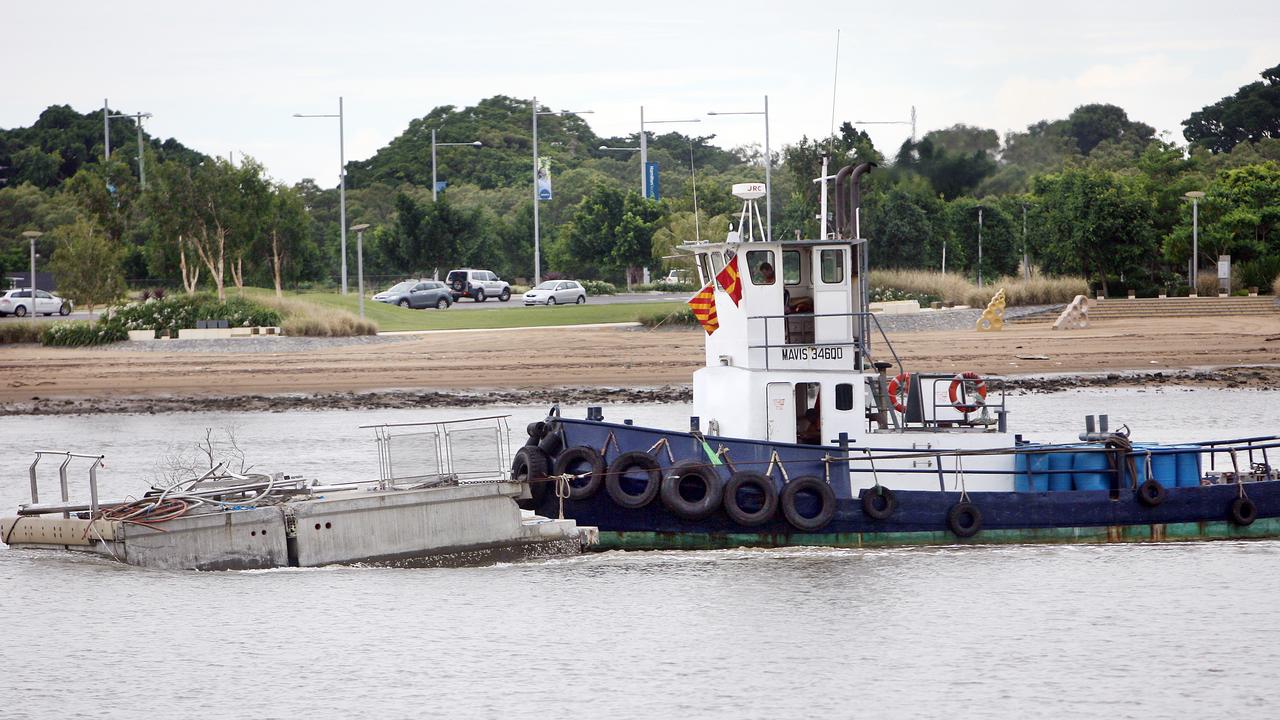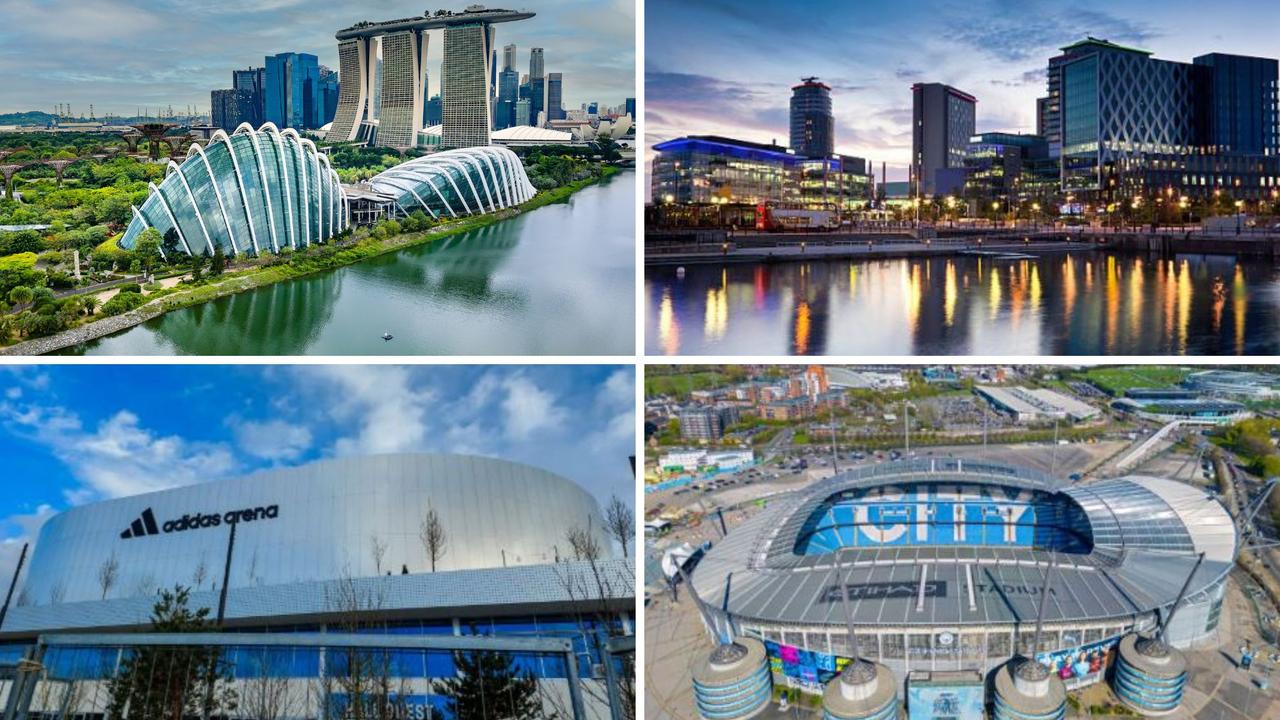Qld floods 10 years on: State infrastructure now stronger
If there was one positive to come out of the cataclysmic 2011 floods, it was the opportunity to learn and rebuild Queensland even better.
QLD News
Don't miss out on the headlines from QLD News. Followed categories will be added to My News.
The iPhone was less than four years old, “Can Do” Campbell Newman was lord mayor and Brisbane residents were still thrilled by the novelty of walking on water on the Brisbane River’s floating Riverwalk.
Now, 10 years on from the summer of disaster, Queensland has changed dramatically.
And it’s not merely in the form of the seven new Brisbane River ferry terminals designed to withstand a one-in-500-year-flood.
It’s not even in the creation of the 870m-long, 6m-wide updated version of the Riverwalk, now securely anchored to the riverbed by 37 concrete piles.
The 2010-11 floods sparked a revolution across the state, as we finally realised the old ways of doing things were not working, and started building quality infrastructure that would stand the test of time and weather.
We finally began refusing to build the same old bridge or the same old pumping station only to see it washed away in the next flood, and looked forward to what would work for future generations.
David Crisafulli, now state opposition leader, was still in his early 30s when he was made minister for local government, community recovery and resilience in early 2013, and began to comprehend the enormity of the task before him.
Crisafulli recalls a pivotal moment in the reconstruction process when he found out the water supply intake station on the Burnett River had been destroyed in the 2011 floods, replaced, then washed away again in a 2013 flood event.

“I used that situation where councils were simply following the rules and replacing infrastructure on a like-for-like basis to successfully argue with the Federal Government that we needed to change the culture,’’ he recalls.
“We needed to spend a bit more money, and build infrastructure that would not be simply washed away.’’
The spirit spread across the state, overseen by local government and the Queensland Reconstruction Authority which was determined, well before Crisafulli’s campaign, that there would be no wastage of resources on infrastructure which would not stand the test of time.
Today, northbound motorists driving into Rockhampton on the Bruce Highway will find themselves corralled above a flood plain courtesy of a $170 million project that provided two bridges supported by more than 12,000 reinforced concrete piles plunging as far as 26m below the ground.
Though not connected with the QRA, this project nonetheless demonstrates how radically the face of the state has changed since 2011.

When the bridges opened in 2015, then member for Rockhampton Bill Byrne said they essentially flood-proofed the southern entrance to Rockhampton which, for more than a century of wet seasons, had left the central Queensland city cut off from the rest of the world.
In Toowoomba, which came to international attention in January 2011 when images of the flash flooding which cost four lives in a matter of hours went global, $25 million of flood mitigation works make a repeat of the tragedy highly improbable.
In the far western town of Charleville, Bradley’s Gully which once ran through the centre of town and contributed to countless floods over the generations has been diverted in a project costing $14.3 million.
In the historic Lockyer Valley town of Grantham, where 12 lives were lost on January 10, 2011, as an inland tsunami swept through the district, hundreds of residents are living in a hilltop suburb as they reinvent a new future for the picturesque community that lost 148 homes to floodwaters on that day.


Originally published as Qld floods 10 years on: State infrastructure now stronger





